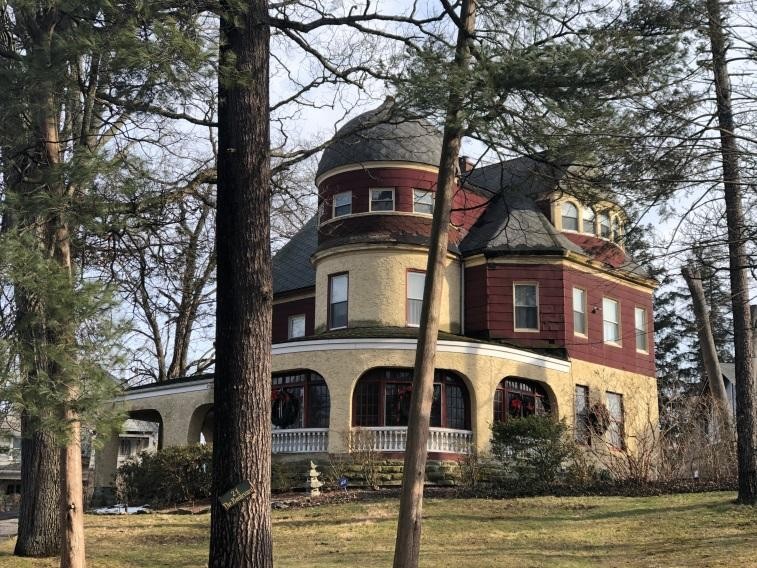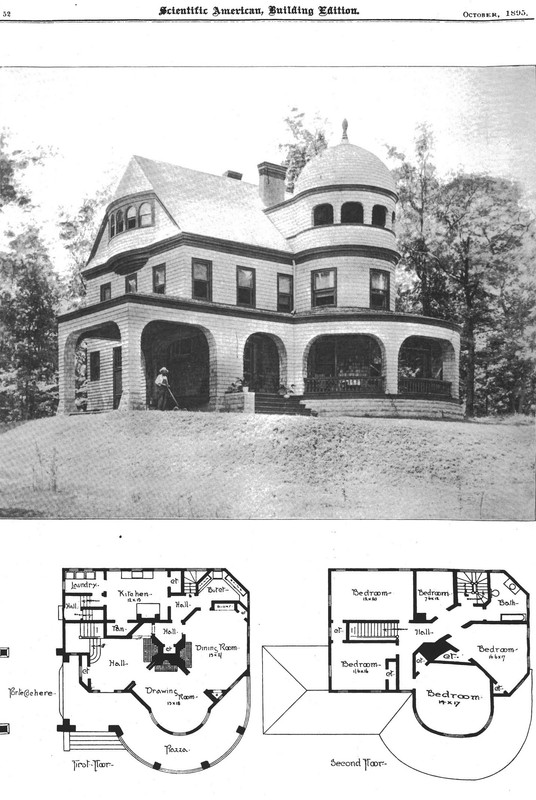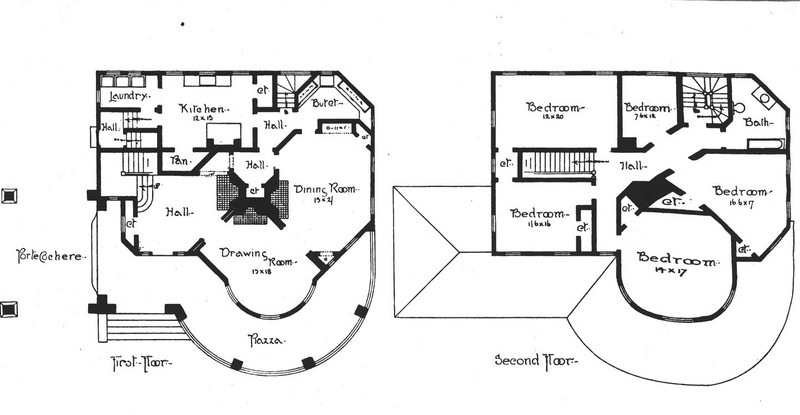29 The Boulevard (Rochelle Park-Rochelle Heights Historic District)
Introduction
Text-to-speech Audio
The Rochelle Park-Rochelle Heights Historic District in New Rochelle, NY, is comprised of over 270 residential buildings in two historic neighborhoods. An impressive example of early Shingle-style architecture commands the hillside at 21 The Boulevard, one of the first homes constructed in Rochelle Park in 1885. This “cottage” was built for Marc Klaw, a leading theatrical agent and one of the neighborhood’s many notable residents. The distinctive features of 21 The Boulevard, include its three-story tower, wraparound porch, and domed roof, and were detailed in the October 1895 “Building Edition” of Scientific American. In 1986, Rochelle Park-Rochelle Heights was locally designated a historic neighborhood by the New Rochelle Historical Landmarks and Review Board. The Rochelle Park-Rochelle Heights Historic District, including 21 The Boulevard, was placed on the National Register of Historic Places in 2005.
Images
21 The Boulevard in Rochelle Park-Rochelle Heights Historic District

21 The Boulevard in Rochelle Park-Rochelle Heights Historic District

Floor plan of 21 The Boulevard in Rochelle Park-Rochelle Heights Historic District

Backstory and Context
Text-to-speech Audio
The house at 21 The Boulevard was one of the first homes built in the neighborhood of Rochelle Park, one of the first residential parks in America. As with the other early houses, it was designed in the Shingle style, with a rock-faced foundation and cedar shingled walls wrapping around a variety of forms, including a massive three-story tower with an unusual domed roof. Also typical of the style, a deep porch wraps around the front; this one also extends out over the driveway, creating a porte cocher. Set in a prime location, the house overlooked The Boulevard, a key element to the overall plan of Rochelle Park. Landscape architect Nathan Barrett employed a Parisian-inspired “concourse” road to connect the large open space of “the Lawn” with the divided road of “the Court.” The Boulevard was one hundred feet wide with room for grassy areas on either side. The deep setbacks of the homes provided plenty of breathing room, view sheds, and a dramatic space for strolling and motoring.
A description of this home and its distinctive exterior and interior features were detailed in the October 1895 “Building Edition” of Scientific American. “A Cottage at Rochelle Park” was the caption for the picture of the house on the front cover; the term “cottage” implied a large, often fancy, summer residence during this period. According to the article, the building was designed for Marc Klaw by architect H. S. Rapelye of Mount Vernon, NY, at a cost $9,000.
Marc Klaw (1858-1936) was an attorney and leading theatrical agent who undoubtedly found the location ideally situated, given its proximity to the New Rochelle train station. His Manhattan agency would become the second largest in the country, controlling nearly two hundred theaters, primarily in the South. He was also one of the founders of the Theatrical Syndicate, which earned a reputation of ruthless business dealings. The Syndicate produced productions such as Ben Hur, the Ziegfield Follies, and The Jazz Singer. Notably, Syndicate owners Klaw and Erlanger also produced Forty-Five Minutes from Broadway. The hit show of 1906 starring George M. Cohan poked fun at the “the rubes” who lived just forty-five minutes from Broadway, in what was, ironically, becoming one of the country’s most fashionable suburbs—New Rochelle.
Sources
- “A Cottage at Rochelle Park,” Scientific American, Building Edition. Oct. 1895.
- Fisher, James. “Marc Klaw: 1858-1936.” The Historical Dictionary of the American Theater. https://american_theatre.en-academic.com/687/Klaw%2C_Marc. Accessed July 11, 2022.
- “Rochelle Park-Rochelle Heights Historic District.” National Register of Historic Places. United States Department of the Interior/National Park Service. 2005. https://catalog.archives.gov/id/75323193
- Tenney, John. “Marc Klaw: 1858-1936.” Immigrant Entrepreneurship, German Historical Institute. Oct. 29, 2013. http://www.immigrantentrepreneurship.org/entries/marc-klaw/. Accessed July 11, 2022.Williams, Gray. Picturing Our Past: National Register Sites in Westchester County. Westchester County Historical Society. 2003.
Barbara Davis - Westchester County Historical Society
Scientific American, Building Edition - Oct 1885
Scientific American, Building Edition - Oct 1885
